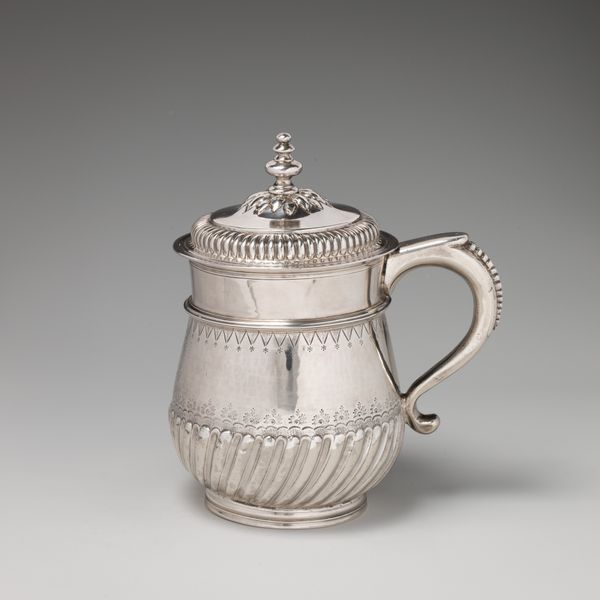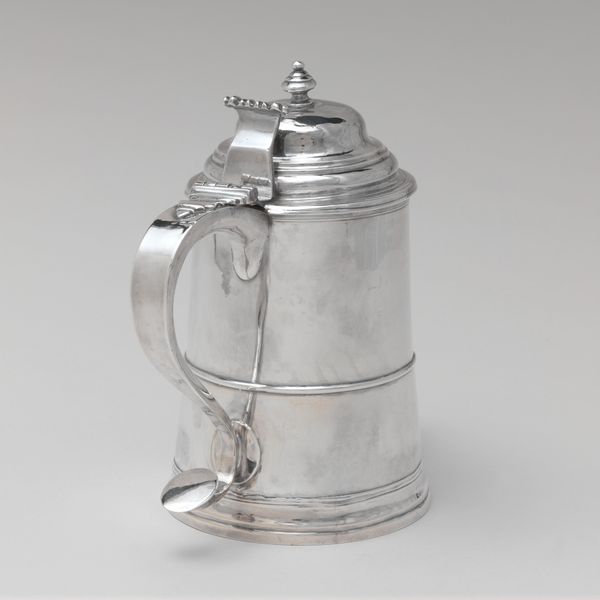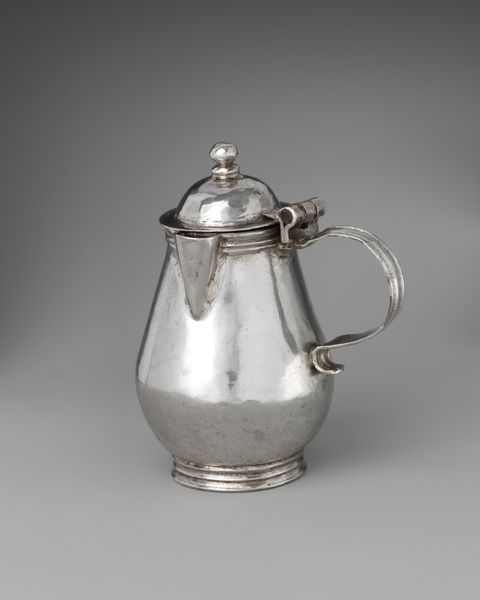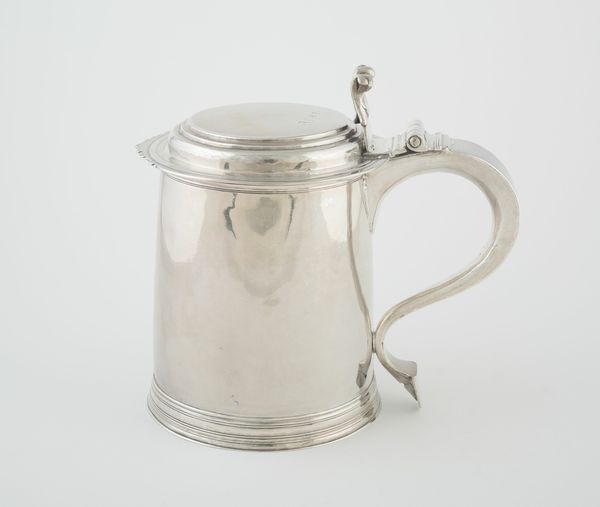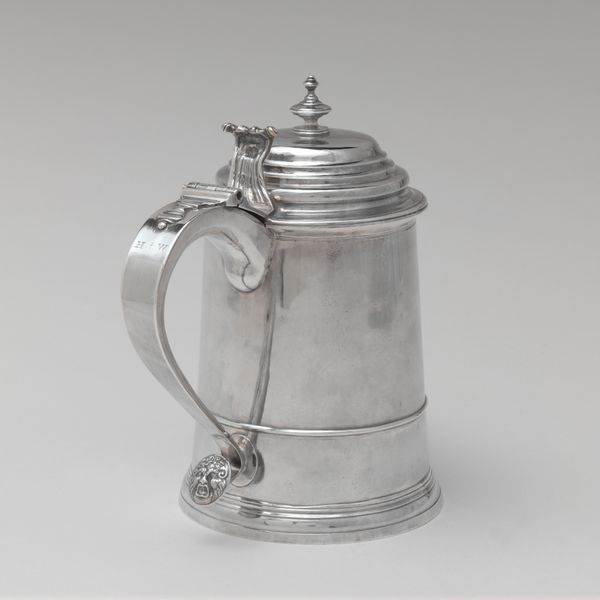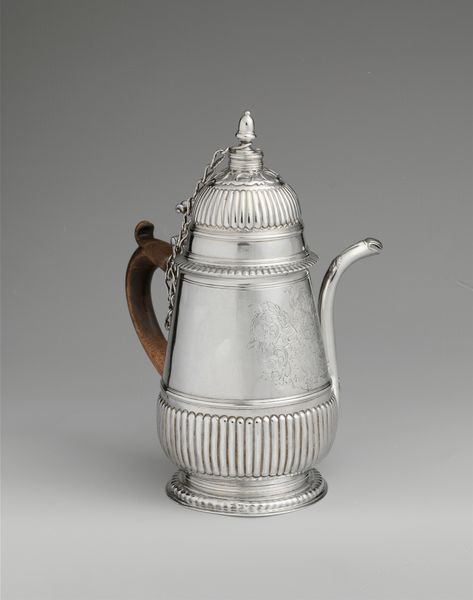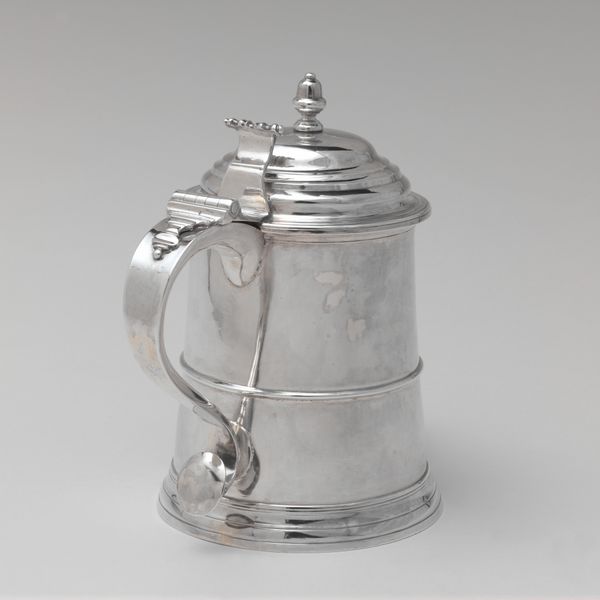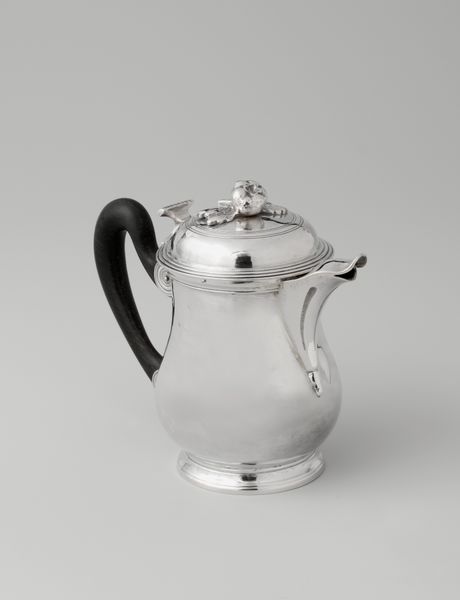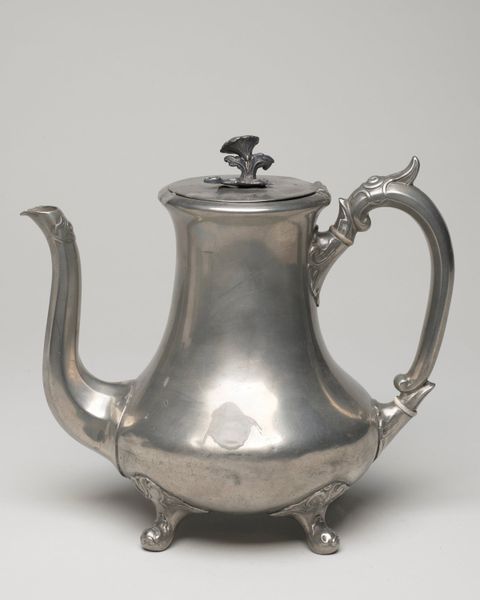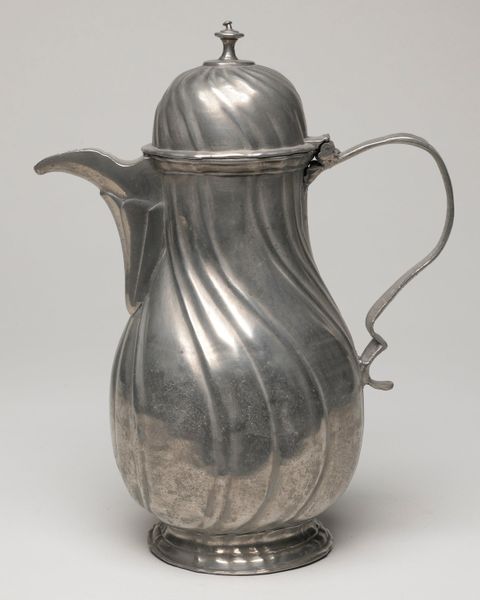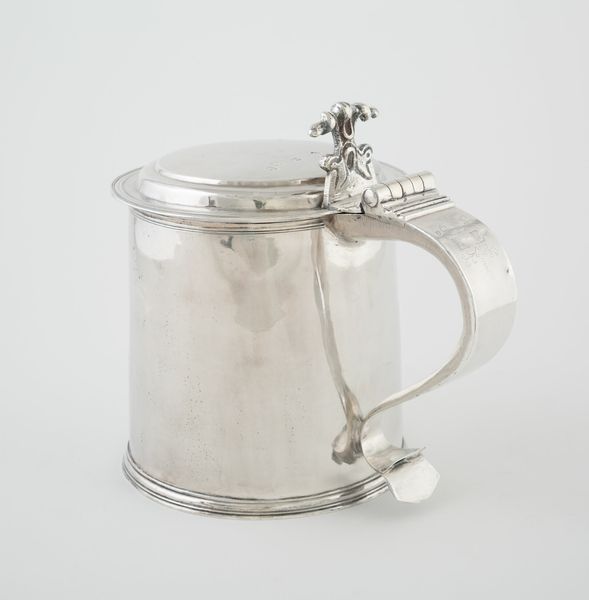
silver, ceramic
#
silver
#
ceramic
#
ceramic
Dimensions: 6 5/16 x 5 5/16 x 5 5/16 in. (16.03 x 13.49 x 13.49 cm)
Copyright: Public Domain
Editor: Here we have a rather ornate covered tasse and saucer, likely from the 19th century. It’s composed of silver and ceramic, although it all looks silver to my eye. The tiny floral details make it seem almost… precious. What do you see in this piece? Curator: I see a potent symbol of social aspirations and shifting class dynamics. Objects like this tasse were luxury items. Owning such fine tableware wasn't just about enjoying a cup of tea, it was about displaying wealth, refinement, and access to a globalized network of trade and craftsmanship. Editor: So, the owner was making a statement? Curator: Precisely! Consider how tea and coffee, initially exotic imports, became increasingly tied to European social rituals and expanding colonial ventures. Objects like this reflect the rising importance of these rituals within bourgeois society and, moreover, reflect the rise of that society itself. Do you notice how this is displayed at the museum? Editor: Yes, it is in a glass vitrine on the decorative arts floor. Curator: Think about how the act of collecting and displaying such an object in a museum contributes to its ongoing story. It goes from use in a private sphere to a curated presentation in the public sphere. Does that influence how you read the object? Editor: Definitely. Placing it in a museum gives it this extra layer of historical and cultural importance, like we’re preserving not just the object, but also the values associated with it. It also does encourage thinking about the economic status that had to exist in order to make possible something like this. Curator: Exactly! It shows the evolution of objects from daily use to artifacts representing cultural identity. We both see how this reflects historical consumerism, aspiration, and the political framing of everyday life, don't we?
Comments
No comments
Be the first to comment and join the conversation on the ultimate creative platform.
